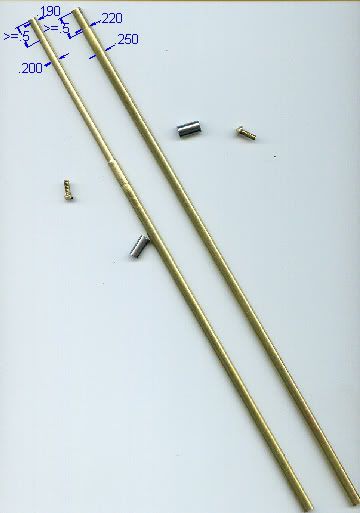Range rods
Just got back from the SHOT show and it went just great out there. I met a great bunch of people and amazingly I didn't even screw any barrels up while chambering surrounded by a crowd

I really have to say the Grizzly lathes performed beyond what I even thought they would do. I chambered on one for the first time last summer when we made the DVD, and now did three more chambers at the SHOT show - all of them came out perfect!!. It took a little while to start getting the feel of the machine, but oh man did it do a great job- every one came out flawless, even with all the distractions.
Those of you who were there saw that all three barrels I chambered ended up with absolutely no runout whatsoever in the chambers front to rear (the .0001" indicator didn't even wiggle when turning the barrel), even with quite varying amounts of curvature between the three barrels the throats were all perfect, and the runout in the bores ahead of the chambers stayed less than .0001" for at least 2-3" ahead of the chambers before the curvature slowly started to become measurable.
I had a lot of questions on range rods, and I see some of the same questions here after I got back so I thought I'd clarify how I do it. I made three sizes of rods for the main chambers I do: #1 for 22 and 6mm: make from 13/64" drill rod, turn the end down to about .189" and then grind it or spin it down to where the reamer bushings will just barely go on and turn freely. #2 for 25, 6.5, 270 and 7mm: use 15/64" drill rod and turn end down to about .220" and fit bushing same way. #3 rod for 30 cal, 338 and larger: use 17/64" rod and turn end to about .252" and fit bushings. The ends will drill and tap easily. Dave Kiff at Pacific Precision is making them now so those of you who don't want to make them can buy them and the bushings all from Dave.
I hold the range rod in the tailstock chuck as little as possible - only about 1/16" or so to allow the range rod to freely pivot back and forth as the bore moves. I've had better luck doing it this way than holding the rod more firmly in the chuck.
I did have an extra large bore and consequently a very loose fitting bushing one time and no tighter bushing, so for that particular job I bent the range rod slightly and held it firmly in the chuck so it would hold tighter against one side of the bore and I could get a pretty good reading on it, but it works way better to get a good fitting bushing and let it freely move.
One other thing to keep in mind is what Alinwa posted earlier - it's having more of the shaft outside the barrel to give more accurate readings (the pivot point is farther away from the indicator), so the longer the rod the closer your indicator readings will be to the actual bore movement you are measuring. I think 12" is minimum size and works really well, but it sure wouldn't hurt to go even longer yet.
After seeing how many questions guys had, even after seeing the Grizzly DVD, it really seemed to help quite a few guys understand so much better what was going on when they could see it in person and ask a lot of questions as the process went on. The DVD shows all the basics, but there are so many details that aren't on the DVD that I explained to people at the show in person, and it really seemed to help.
I do several classes a year now on long range shooting and after seeing the interest at the SHOT show, I think I will start offering classes in chambering, crowning and bore slugging/evaluation to interested people at my shop. I can do this about any time since I chamber barrels year-round. I have rifle ranges from 100 to 1000 yards right outside the door at my shop that you can also shoot on if you want, and my wife has started a bed & breakfast at our home for hunters and shooters if you need a place to stay (my shop is attached to my home and she's a great cook). Just let me know if anyone is interested.
Thanks!
Gordy Gritters
 .
.

